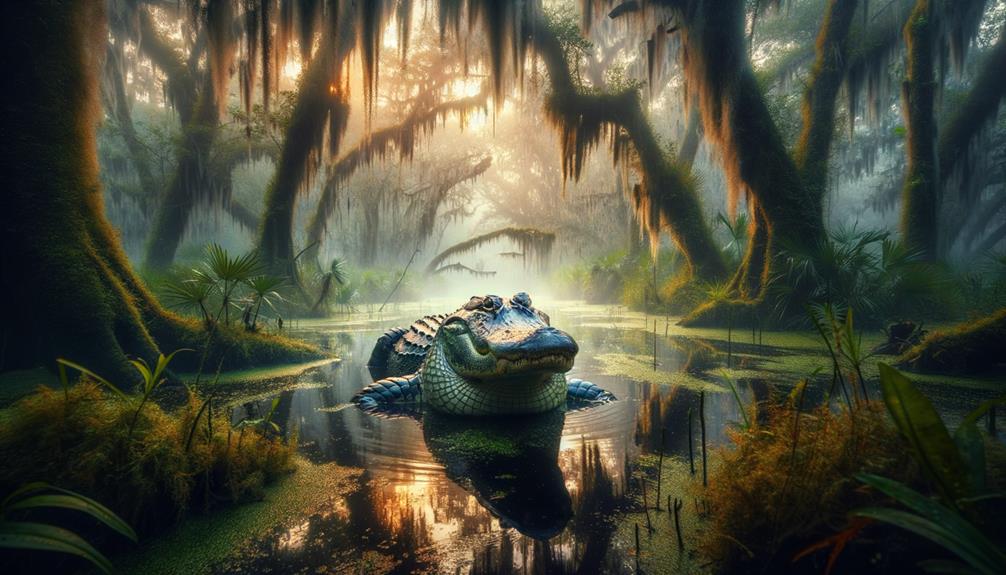I'm captivated by gharials, those unique, fish-eating crocodilians with their long, thin snouts and over 100 interlocking teeth. These majestic reptiles, especially males, can reach up to 20 feet in length. Sadly, they've lost most of their historical range, now confined to river sanctuaries in India and Nepal. With fewer than 900 left in the wild, their population has plummeted due to hunting, habitat loss, and pollution. Conservation efforts focus on breeding programs and anti-poaching measures, but the challenge is immense. These creatures aren't just fascinating; they play a vital role in maintaining river ecosystems. There's still much to learn about these incredible animals.
Key Takeaways
Gharials are apex predators that primarily feed on fish, playing a crucial role in maintaining the ecological balance of river systems. With fewer than 900 individuals left in the wild, they are critically endangered. The main threat to their survival is habitat loss, which is caused by pollution, dam construction, and human encroachment. Conservation efforts are underway in India and Nepal, including breeding programs and anti-poaching measures. Historically, gharials were hunted for their skin and snouts, which significantly contributed to their population decline.
Physical Characteristics
Examining the physical characteristics of gharials reveals their distinctive long, thin snouts packed with over 100 sharp, interlocking teeth, perfectly suited for catching fish. The gharial's slender jaws are a marvel of nature's engineering. Males develop a distinctive bulbous nasal growth, called a ghara, at the snout's tip, which likely plays a role in vocalization and mating displays, adding to the species' unique appearance.
Among crocodilians, the gharial stands out not just for its snout but also for its impressive size. Males can reach an impressive 20 feet in length, making them the largest of all crocodilian species. Females, while slightly smaller, can still grow up to 15 feet in length. Another fascinating aspect is their reproduction; gharial eggs are the largest among crocodilians, each weighing around 6 ounces.
Despite their size and fearsome teeth, gharials have weak leg muscles, making them poorly equipped for land locomotion. They spend most of their time submerged in rivers, their natural habitat. Unfortunately, the national population of these remarkable Indian reptiles has dwindled, making their survival increasingly uncertain.
Habitat and Distribution
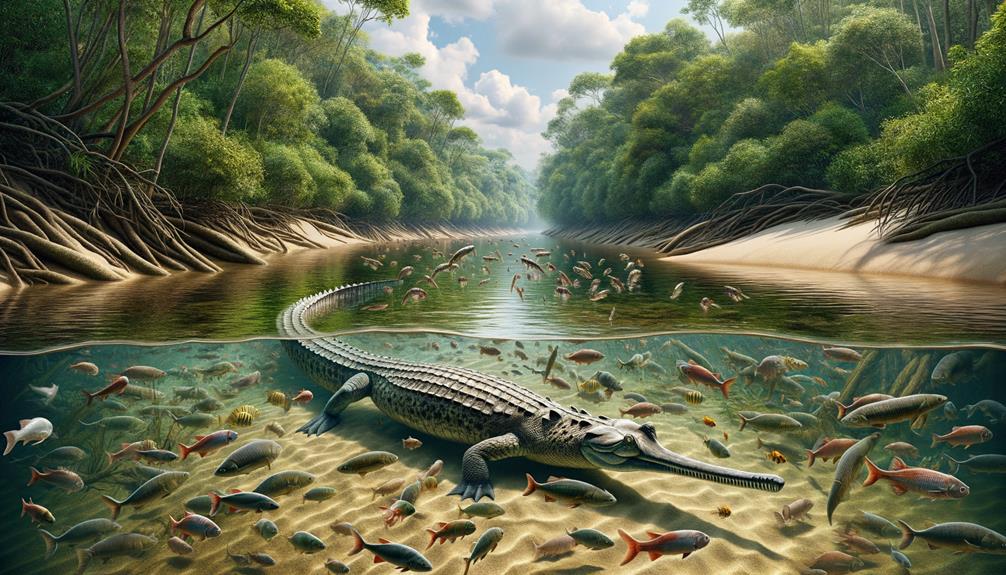
The gharial's habitat has dramatically shrunk from its historical range, now restricted to a mere 2% of its original territory. Once found in the Indus, Ganges, and Brahmaputra river basins, these critically endangered crocodilians are mainly confined to the Chambal River in India and Nepal's Narayani River, which host the largest remaining populations.
Gharials thrive in deep, fast-flowing rivers abundant with fish, their primary food source. They require steep sandy banks for basking and nesting, essential for both males and females. Unfortunately, habitat destruction due to river pollution, damming, and agricultural development has severely impacted their riverine habitats.
Here's a snapshot of their current distribution:
| Region | Current Status | Key River Systems |
|---|---|---|
| India | Remaining populations | Chambal River |
| Nepal | Remaining populations | Narayani River |
| Pakistan | Locally extinct | N/A |
The species is locally extinct in Pakistan, Bhutan, and Myanmar. The gharial's decline serves as a stark reminder of how human activities can devastate natural habitats, pushing unique species to the brink of extinction. Protecting these riverine habitats has become an urgent necessity.
Threats to Survival
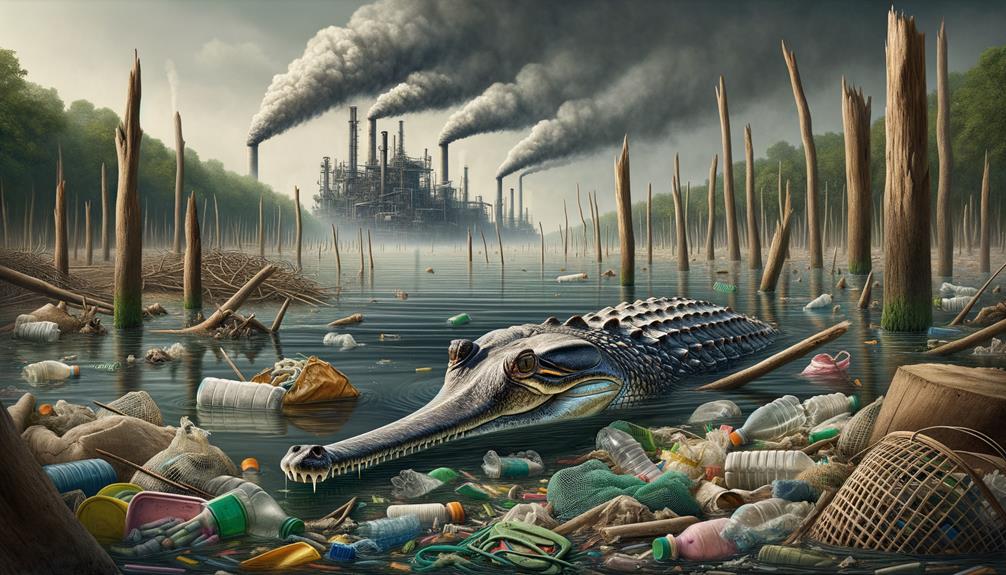
Gharials are struggling to survive, with their population plummeting by over 96% since the 1940s, leaving fewer than 900 individuals in the wild. These unique crocodilians, characterized by males developing a bulbous growth on their snouts, primarily inhabit major river systems like the Ganges and Brahmaputra. However, their survival is under constant threat due to hunting, habitat loss, and unintentional capture in fishing nets.
Historically, gharials were hunted for their skin and meat, and their snouts were used as Indian pots, drastically reducing their numbers. Today, river pollution, dam construction, and human encroachment continue to degrade their habitat. In places like Chitwan National Park, these pressures are evident. The slow reproductive rate of gharials compounds the issue; females lay only 20-95 eggs annually, making population recovery extremely slow.
Adult males, one of the largest crocodilian species, must compete for territory and access to multiple females to breed successfully. However, reaching sexual maturity in such a fragmented habitat is a significant challenge. The decline of the gharial population serves as a stark reminder of the delicate balance within our ecosystems, highlighting the urgent need for effective conservation strategies.
Conservation Efforts
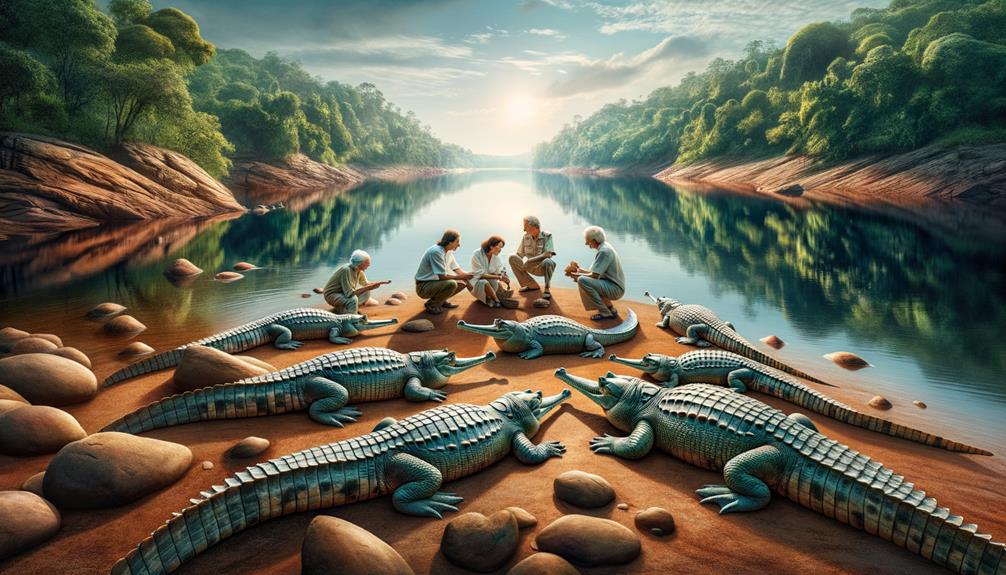
Conservation efforts for gharials have taken a more innovative and focused approach given the dire threats to their survival. Breeding and reintroduction programs in India and Nepal, initiated in the 1980s, aim to boost gharial populations. These programs ensure genetic diversity by breeding both male and female gharials, which is crucial for the species' resilience. Their narrow snouts, adapted to feed on fish, also enable them to feed on insects, a critical food source during the dry season.
In 2010, a tri-state committee was formed to manage and protect the National Chambal Sanctuary, a vital habitat for the Indian gharial on the Indian subcontinent. This sanctuary provides a safe haven, where anti-poaching measures and patrols are rigorously implemented. These efforts have significantly mitigated threats like illegal hunting and habitat destruction.
Public awareness campaigns have also been launched to educate locals about the gharial's plight. The Indian Wildlife Protection Act of 1972 legally safeguards these creatures, prohibiting hunting and mandating conservation actions. By concentrating on these strategies, we're working to ensure that the formidable bite force of the Indian gharial continues to thrive in our rivers.
Importance in Ecosystem
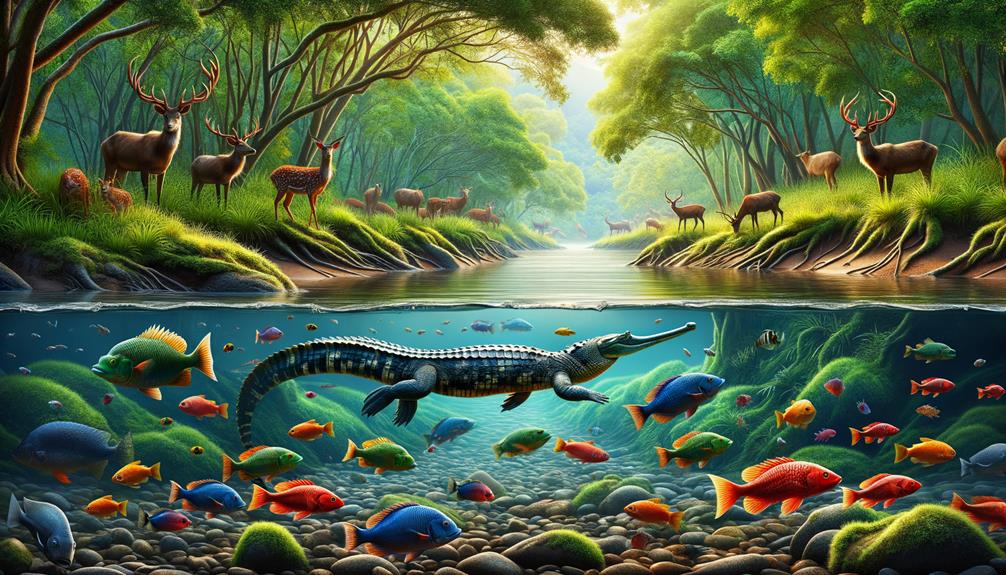
In river ecosystems, gharials play a crucial role in maintaining ecological balance by controlling fish populations. As apex predators, they prevent overpopulation, which could lead to imbalances and degraded habitats. The presence of both males and females in healthy numbers indicates a thriving and biodiverse ecosystem.
In regions like northern India, where wild gharials inhabit areas such as the National Park and Tiger Reserve, they contribute significantly to nutrient cycling. By consuming fish and depositing waste, they enrich the river's nutrient levels, supporting other aquatic life forms. At one point, the population was estimated to be critically low, making conservation efforts essential for maintaining ecological balance.
During the breeding season, females leave the water to dig nests on sandy riverbanks, ensuring the continuation of their species. The decline in the global population of gharials disrupts the food web, affecting other species that share their habitat. Protecting these ancient creatures not only preserves their existence but also maintains the intricate ecological processes that rivers rely on.
Frequently Asked Questions
What Are the Predators of the False Gharial?
Humans pose a significant threat to false gharials, hunting them for their meat, skin, and supposed medicinal properties. Large carnivores, including tigers, crocodiles, and pythons, also prey on these creatures. Additionally, monitor lizards and wild boar often raid their nests and eat their eggs.
What Type of Creature Is the Fish Eating Gharial?
I find the fish-eating gharial to be a fascinating creature – it's a crocodilian native to the northern Indian subcontinent, with a long, thin snout and over 100 sharp teeth that make it perfectly suited for catching and consuming fish.
Are Gharials a Threat to Humans?
Gharials pose no threat to humans. They primarily feed on fish and tend to avoid people. Their distinctive, long snouts are well-suited for catching fish, not attacking humans. There have been no recorded incidents of gharials harming humans, making them essentially harmless.
How Endangered Are Gharials?
Gharials are on the brink of extinction, with only around 550 mature individuals remaining in the wild. Habitat destruction, hunting, and pollution have led to a devastating 90% decline in their population since the 1940s. However, conservation efforts offer a glimmer of hope for the species' survival.
How Many Gharials Are Left in the Wild?
Around 550 mature adult gharials remain in the wild, with approximately 200 adults in India and 35-40 in Nepal. Despite conservation efforts, their population remains critically endangered, and their survival is a pressing issue.


